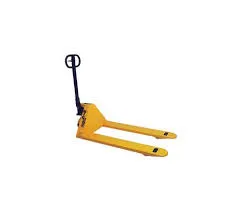


Electric Winch Design Principles and Applications
Electric winches have become indispensable tools across various industries, from construction to marine applications. These devices utilize electrical power to wind and unwind a cable or rope, enabling the lifting and lowering of heavy loads with precision and efficiency. Designing an electric winch involves careful consideration of multiple factors, including mechanical components, electrical systems, safety features, and operational environments.
Key Components of Electric Winch Design
1. Motor Selection The heart of any electric winch is its motor. A properly selected electric motor not only provides sufficient torque to lift the desired weight but also ensures that the winch operates efficiently. Common choices include AC and DC motors, with DC motors being favored for their high starting torque. The motor's power rating should match the load requirements, factoring in any load surges that may occur during operation.
2. Gearbox and Gear Ratio To translate the motor's rotational speed into usable torque, a gearbox with a specific gear ratio is essential. The gear ratio determines how much the winch can amplify the motor's torque. A high gear ratio is advantageous for lifting heavy loads, while a lower ratio may be suitable for faster winch operations at lower weights. Understanding the required load handling capacity is crucial in selecting the right gearbox.
3. Drum Design The winch drum serves as the spool for the cable or rope. Its design impacts how smoothly the cable is wound and unwound. A cylindrical drum with proper dimensions prevents any problems related to spooling, such as kinks or jams. Additionally, it is important to select materials that provide durability and resistance to wear over time, particularly in harsh environments.

4. Control Systems A reliable and intuitive control system enhances the usability and safety of an electric winch. Control can be manual or automated, with options for remote operation. Modern winches often integrate advanced technologies such as feedback sensors and programmable logic controllers (PLCs) to provide precise control over speed and load management while ensuring that safety protocols are adhered to.
5. Safety Features Safety is paramount in the design of electric winches, given the potential hazards associated with lifting heavy loads. Features such as overload protection, emergency stop buttons, and limit switches help prevent accidents. Additionally, incorporating a brake system that holds loads securely when the winch is not actively in use can prevent unintentional descents.
Applications
Electric winches have a wide array of applications, reflecting their versatility. In construction, they are used to hoist materials to various elevations, minimizing manual labor and enhancing safety on job sites. Marine operations utilize electric winches for anchoring and mooring vessels, providing reliable performance in challenging conditions. Similarly, in the automotive industry, electric winches are employed for vehicle recovery and off-road applications.
Conclusion
The design of electric winches combines mechanical engineering, electrical knowledge, and safety considerations to produce effective lifting solutions for various fields. As technology advances, so does the potential for enhanced winch designs featuring smart technologies, improved motor efficiency, and greater operational safety. Ultimately, the successful implementation of an electric winch requires a deep understanding of its components, applications, and the environments in which it operates, ensuring that it delivers reliable performance while prioritizing user safety.



